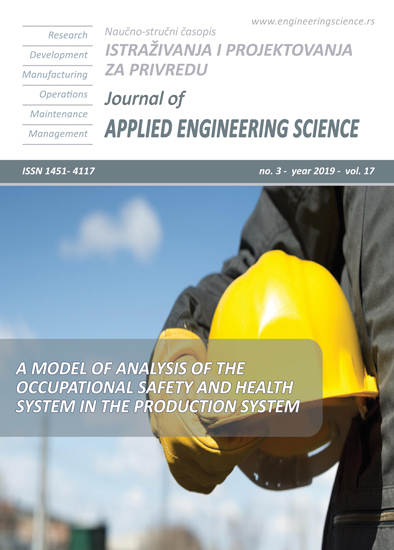PRODUCTION OF TECHNOLOGY METALS FROM WASTE ELECTRONICS
Abstract
The rising criticality of technologically inevitably metals and the continuous growth of the waste electronics promote a scientific need for development of innovative recycling process, both efficient and selective. Experimental results showed primarily that by pyrometallurgical treatment it is difficult to achieve selectivity, and secondary that the distribution of metals in melting products is too complicated, deviating from the experiential and expected. Therefore, application of an integral pyro - hydrometallurgical treatment is suggested for improved raw materials efficiency. Successful implementation of the developed state-of-art technological process, guarantee more efficient approach to recycling processes, production of new materials which supports the concepts of sustainable development and cleaner production. Proposed technological solution is applicable in industry with relatively low investments compared to expected revenues, allowing companies to become competitive in the regional market and beyond, which is particularly important for small and medium enterprises with lower operating capacities. Techno-economic justification and integral pyro - hydrometallurgical process for waste electronics recycling is presented. This paper explains measures for the further development of the recycling industry as a part of circular economy strategy in Serbia.
References
/1/ L. Zhang, Z. Xu, (2016), A review of current progress of recycling technologies for metals from waste electrical and electronic equipment, Journal of Cleaner Production, 127, 19-36.
/2/ I.M.S.K. Ilankoon, Y. Ghorbani, M.N. Chong, G. Herath, T. Moyo, J. Petersen, (2018), E-waste in the international context – A review of trade flows, regulations, hazards, waste management strategies and technologies for value recovery, Waste Management, 82, 258-275.
/3/ European Commission, (2014), Report on Critical Raw Materials for the EU.
/4/ J. Cui, L. Zhang, (2008), Metallurgical recovery of metals from electronic waste: A review, Journal of Hazardous Materials, 158, 228-256.
/5/ E. Worrel, M. A. Reuter, (2014), Handbook of recycling: State-of-the-art for practitioner, analysts, and scientists, USA: Elsevier.
/6/ P. Nowakowski, B. Mrówczyńska, (2018), Toward sustainable WEEE collection and transportation methods in circular economy – Comparative study for rural and urban settlements, Resources, Conservation & Recycling, 135, 93-107.
/7/ European Commission, (2017), Best Available Techniques (BAT) Reference Document for WasteTreatment, Brussels.
/8/ https://www.kitco.com, March 6. 2019.
/9/ https://www.goldprice.org, March 6. 2019.
/10/ https://www.lme.com, March 6. 2019.

